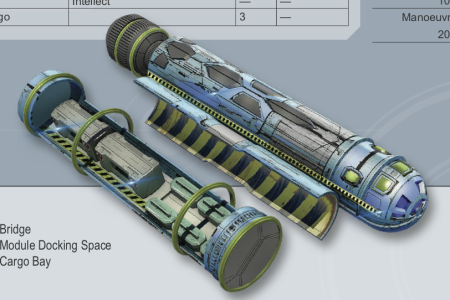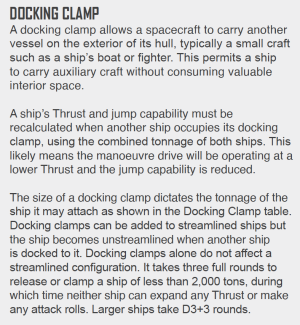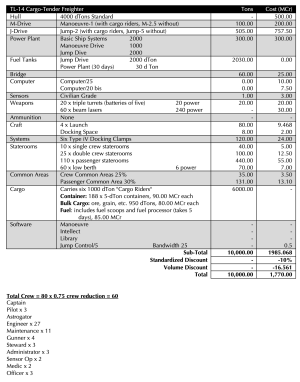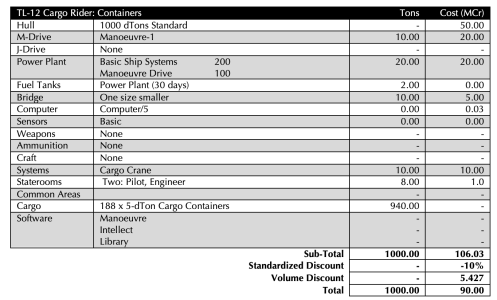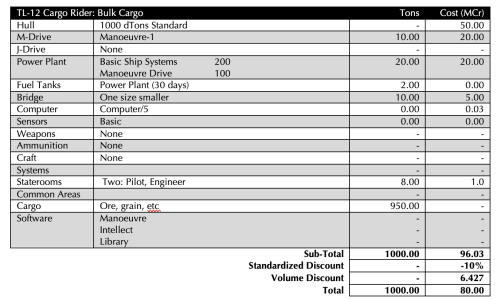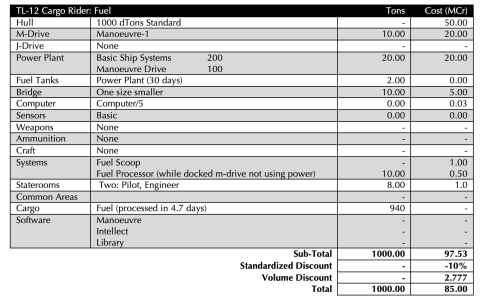Hi,
I have been working on a large 10,000 dTon modular freighter.
The ship has a manoeuvre-1 drive (100 dTons), jump-2 drive (505 dTons), power plant (300 dTon), fuel (2000+30 dTon), bridge (60 dTons), crew and passenger areas, plus other misc items total 4,000 dTons. My design includes six 1000-dTon cargo modules, resulting in a ship totally 10,000 tons.
Jump-2 requires 5% of 10,000 dTons + 5 dTons = 505 dTons. It also requires 20% of 10,000 dTons of fuel = 2,000 dTons.
My question is, if the ship does not have the six 1000-dTon modules attached, does it now becomes a 4,000 dTon ship?
Jump-5 requires 12.5% of 4,000 dTons + 5 dTons which ALSO equals 505 dTons. It would require 50% of 4,000 dTons of fuel which ALSO equals 2,000 dTons.
Does that mean the 4,000 dTon "core" ship can now do jump-5?
I am curious what that would do to the economics? Let's say you had a resource world Jump-4 away from an industrial world. You could jump there"empty" without the six modules attached in a single jump, and then return "full" (with six 1000-dTon cargo modules) in two jumps.
Am I calculating this correctly?
Thanks
Edited to clarify my question.
I have been working on a large 10,000 dTon modular freighter.
The ship has a manoeuvre-1 drive (100 dTons), jump-2 drive (505 dTons), power plant (300 dTon), fuel (2000+30 dTon), bridge (60 dTons), crew and passenger areas, plus other misc items total 4,000 dTons. My design includes six 1000-dTon cargo modules, resulting in a ship totally 10,000 tons.
Jump-2 requires 5% of 10,000 dTons + 5 dTons = 505 dTons. It also requires 20% of 10,000 dTons of fuel = 2,000 dTons.
My question is, if the ship does not have the six 1000-dTon modules attached, does it now becomes a 4,000 dTon ship?
Jump-5 requires 12.5% of 4,000 dTons + 5 dTons which ALSO equals 505 dTons. It would require 50% of 4,000 dTons of fuel which ALSO equals 2,000 dTons.
Does that mean the 4,000 dTon "core" ship can now do jump-5?
I am curious what that would do to the economics? Let's say you had a resource world Jump-4 away from an industrial world. You could jump there
Am I calculating this correctly?
Thanks
Edited to clarify my question.
Last edited:
